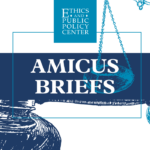
Published September 13, 2021
Norway’s election on Monday begins a two-month collection of votes around the globe that will tell us a lot about public opinion a year-and-a-half into the pandemic. Though each country is different, the patterns are already clear: The traditional right is down, while the far left and populism are on the rise.
Conservatism’s decline is in evidence almost everywhere. Norway’s center-right coalition government received only 40 percent support in the final polls, down almost nine points from its showing in 2017. German Chancellor Angela Merkel’s Christian Democratic Union has been in free fall as Germans view her proposed replacement, Armin Laschet, as the least preferred of the major party leaders. The CDU and its allied Christian Social Union in Bavaria is receiving only 21 percent in current polling, a mark that would easily be its lowest ever if repeated on election day.
Traditional conservative parties in Iceland and Bulgaria are down below a quarter of the vote in recent polls. Meanwhile, three center-right parties had to band together in the Czech Republic to form the SPOLU (“Together”) alliance just to ensure that two of them didn’t fall below the 5 percent threshold needed to win seats. Eleven years ago, those parties received more than 41 percent of the vote; today, the alliance struggles to get more than 20 percent.
Click here to read the rest of this piece at the Washington Post’s website.
Henry Olsen is a Washington Post columnist and a senior fellow at the Ethics and Public Policy Center.
Henry Olsen, a senior fellow at the Ethics and Public Policy Center, studies and provides commentary on American politics. His work focuses on how America’s political order is being upended by populist challenges, from the left and the right. He also studies populism’s impact in other democracies in the developed world.








